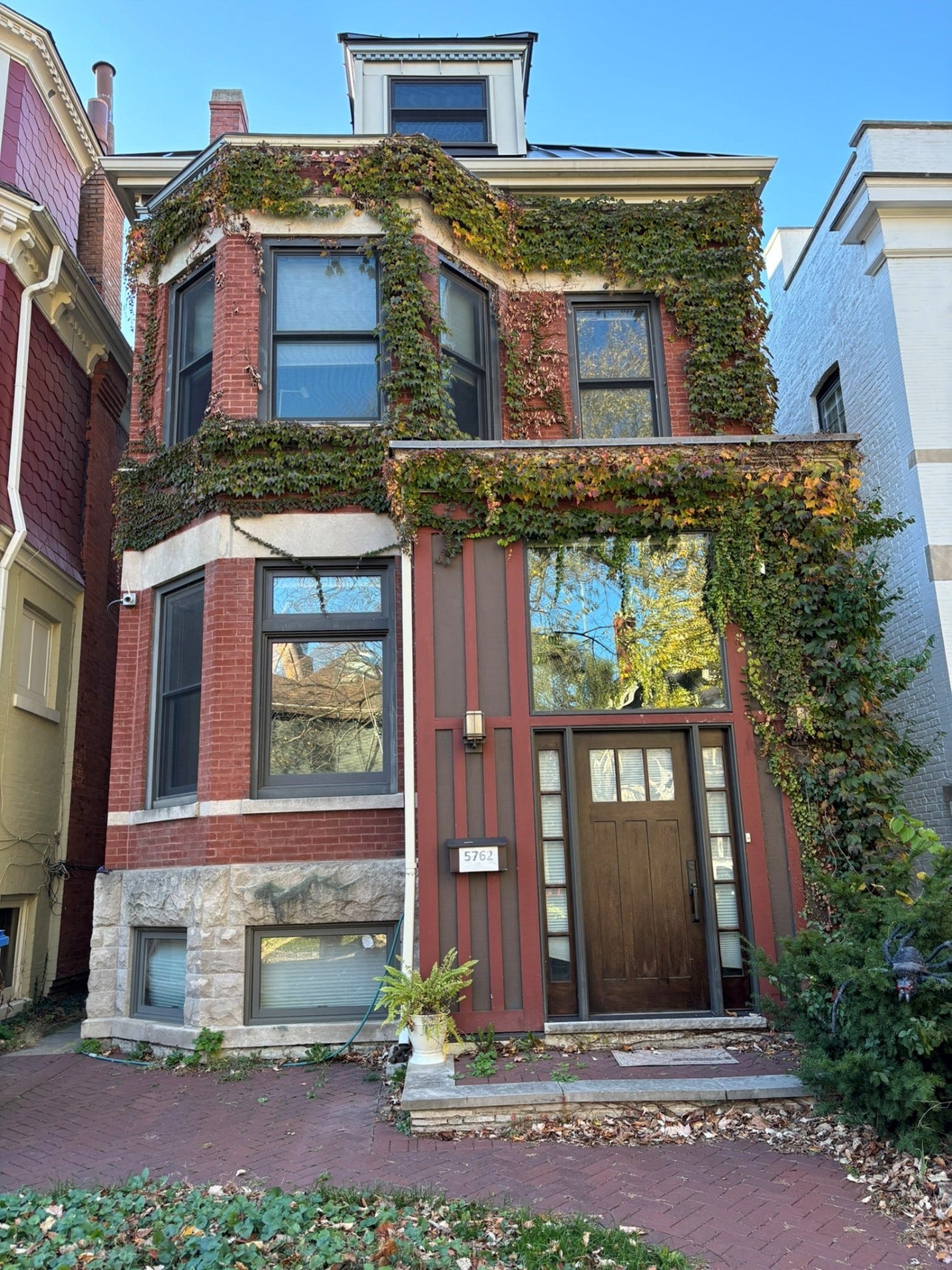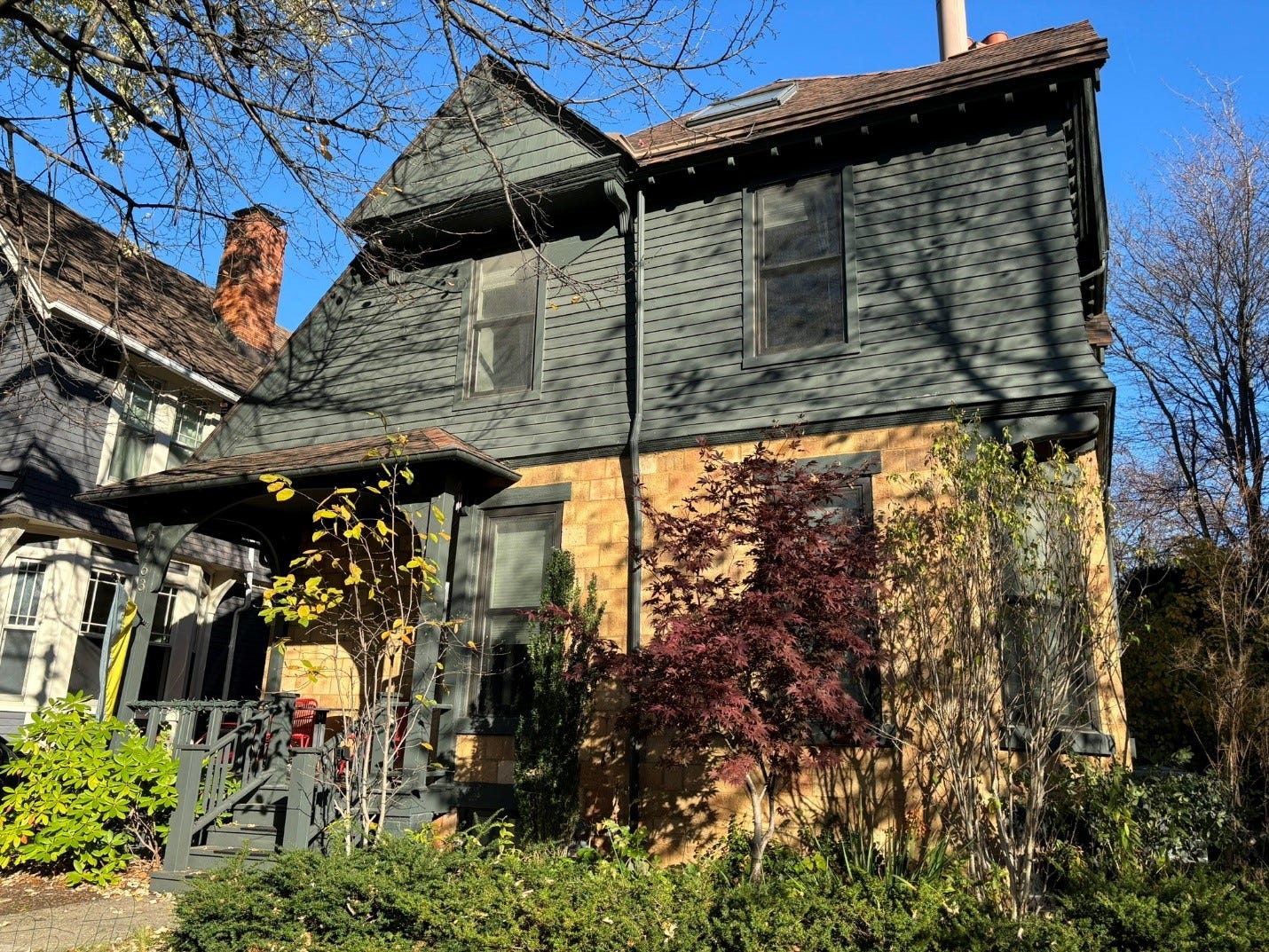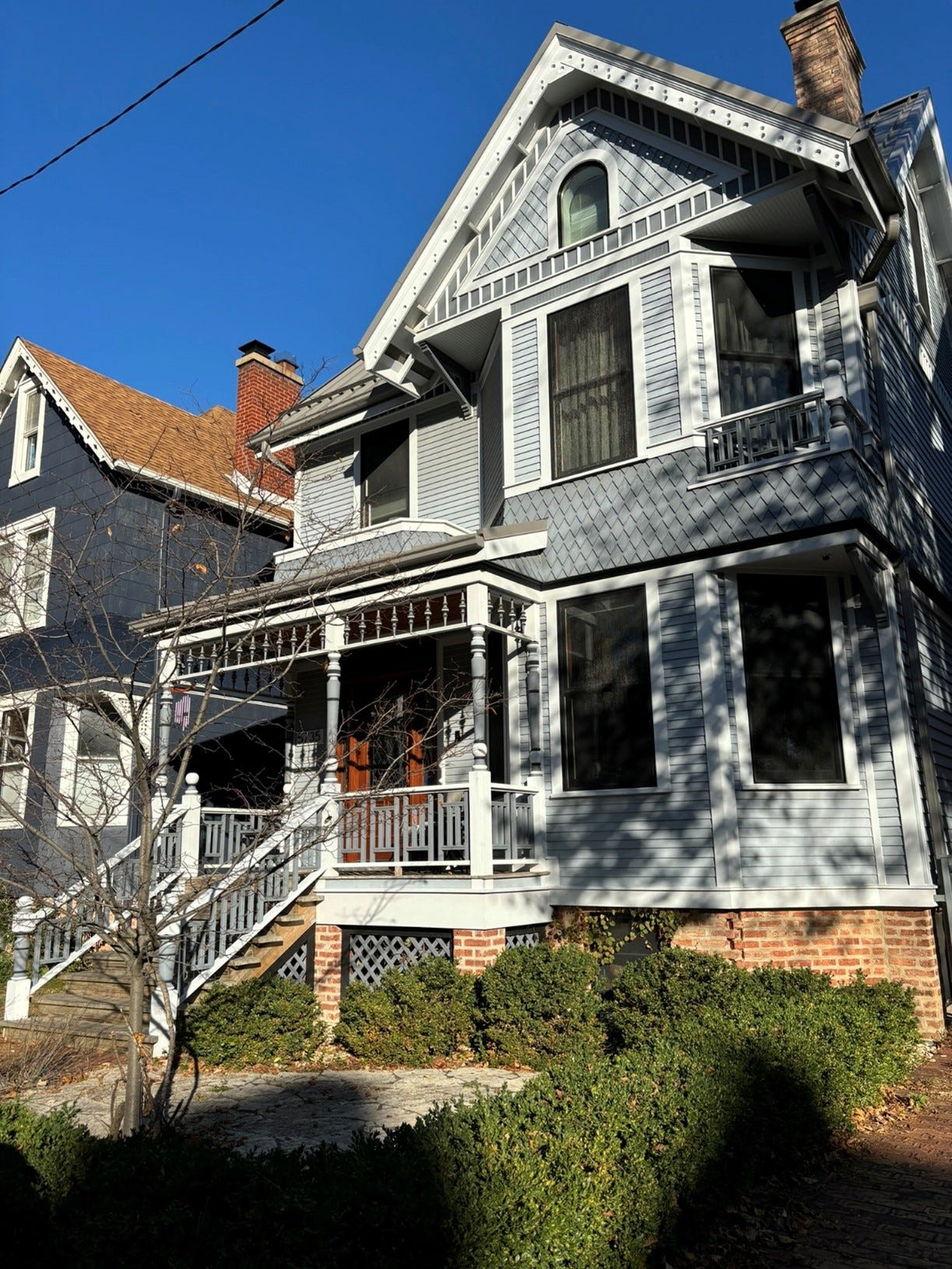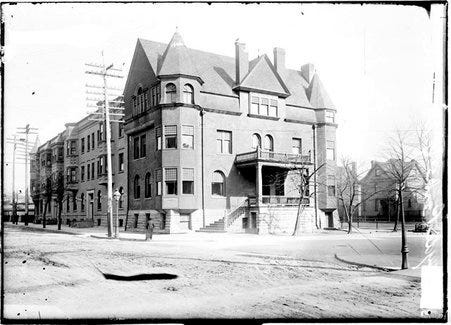I’m working away on the story of the Rosalie Villas. I found so much, I think it’s going to be a two-part story. For those who don’t know, it’s a charming set of houses from a development in the 1880s that has managed to survive. Many have been lovingly restored. It’s a joy to walk down the quiet street. One reason that it feels like a separate world is the railroad embankment. They were built when the tracks were ground level. Now there’s a literal wall to the east. Throughout its 140 year history, the residents have banded together for enjoyment but also to protect the street.
In working through the newspaper archives, I came across an amazing thing. The street barely survived by the skin of its teeth. In the late 1920s, the University of Chicago was quietly buying up houses on Harper Avenue, so that it could build a monster coal-fired power plant near the bend in the street where the plant would have easy access to the large coal deliveries from the railroad tracks. Now those tracks are the Metra Electric commuter line. Back then they were the Illinois Central Railroad. It had gone electric inside city limits in 1926 and ran a very busy commuter schedule, but I guess if the order was big enough they would route deliveries onto those tracks. The university was buying up houses on both sides of the street. It needed property on the west side because it was going to dig steam tunnels to deliver heat to the large university buildings many blocks to the west.
Here’s the architectural drawing. They make it look like it’s not in the way of any thing, but there’s no location that would match the other buildings in the sketch. It’s a behemoth that would have obliterated a charming and unique area of the city.
As the caption says, they had gotten all they could out of the old plant, but now that they needed to power Harper Library, Rosenwald Hall, and Ida Noyes, they needed something more. It was so large because it would include food storage, scientific material storage, bakeries, laundries, and garbage incinerators. Illinois coal is notorious for its soot. Battles over coal-fired smoke were constant. Between that and burning trash, this would have been a nightmare for the neighboring residential streets as well.
The University Record for 1928 noted that the plan was being abandoned because “there seemed to be limitations.” The limitations were that the neighbors were up in arms once they understood what was going on and got the city council to confirm that Harper Avenue from 57th to 59th was zoned residential and that the city didn’t want steam tunnels running under its streets. Phew. The university moved the plant to where it stands now at Blackstone and 61st and went for a cheaper blockier design. The University Record for 1928 was already fussed about the cost, even before the Crash. Now it sits behind the Helmut Jahn designed Chiller Plant, whose corners used to blast a laser of light into my eyes every afternoon when I worked on the southwest side at the University of Chicago Press Building.
One of the many houses that were targeted for demolition seems to have been 5762 S. Harper. At least, the university put it up for sale a bit later.
The house at 5762 Rosalie Court had been built for Miss Emma Over in 1894. There seemed to be a remarkable number of single women who bought villas early on, perhaps attracted by the fact it was a development created by a woman—Rosalie Buckingham. An interesting one was Kate Funck, a rather scandalous professional violinist. Emma Over lived at 5762 until she died in 1917. Soon after, it was the residence of one of the giants of organismal biology Warder C. Allee who demonstrated that cooperation is essential in the natural world. He probably liked living on Harper Avenue, where cooperative organizations repeatedly sprang to life. He famously taught the street to play the card game Concentration. Hopefully, he also enjoyed living down the street from that other local giant of biology, Sewall Wright, who lived at 5721 S. Harper.
In the 1950s, the Department of Urban Renewal apparently did a survey of Harper Avenue. What’s nice to see is how the award-winning restorations of the 1980s brought so much life back to some of the buildings. Here’s a photo of 5763 on the right and the building just to its north on the left.
Here’s what 5763 S. Harper looks like today with the terra cotta tile restored and the asphalt shingles removed.
And here’s the house to the north looking much more cheerful.
Some of the restorations brought back the gorgeous woodworking of the Queen Anne style.
Harper Avenue is a joy to walk down.
I’m not sure why the DUR decided to check out the kitchen at 5806 S. Harper in the 1950s, but it’s a lovely record of how minimalist kitchens used to be. It has the Revereware and coffee percolator my mother had. There was money available to bring houses up to code, so maybe they’d applied. Apparently the code included rules that kitchens needed upper and lower built-in cupboards or separate pantry rooms.
I’m sorry that the Rosalie club house and the music hall couldn’t survive. This three-story clubhouse is what stood where Powell’s Books is now. The building behind is still with us as the Pepperland Apartments.
It had a gymnasium, a library, reading room, billiards, and bowling in the basement. The Rosalie club apparently fielded a decent baseball team in the 1880s, with a pitcher who was worthy of a poem in the Hyde Park Herald, titled “The Rosalie Pitcher.”
The pitcher had a little ball,
And it was white as snow,
And where the striker thought it was
That ball it wouldn’t go.
It had a sudden inshoot curve,
It had a fearful drop,
And when the striker wildly struck,
That ball it wouldn’t drop.
“Why does the ball fool striker so?”
The children all did cry,
“Why Ritchies in the box, you know.”
The people did reply.
I love Powell’s but there’s no denying it’s not a very special building, though it does have a more interesting history than I’d expected. It was the McKey and Poague real estate office in 1970 when a Molotov cocktail was thrown through a rear window. When that didn’t do enough damage, another one was thrown through the plate glass on 57th Street, engulfing the interior in flames. A week later, someone painted “You don't have to be a Weatherman to know that the fire is blowing in the right direction” on the wall. There was a bitter tenants’ dispute going on but they denied responsibility. Given all that was going on with urban renewal, bad real estate practices, and racial red lining, there were plenty of people angry enough to do it. As far as I know, the perpetrator was never found. McKey and Poague moved out and Powell’s moved in.
On the other corner, from the 1880s to 1923, stood the Rosalie Music Hall designed by Solon S. Beman and Irving Pond. Lovely shops supplied all the needs of the residents of Rosalie Court from the ground floor and a performance space and dance floor filled the second. There was nothing else like it on the south side and it was an instant hit.
I love the row of four boys sitting on the curb, staring at the photographer. Chandler & Co. must have found them amusing because they used this in the marketing brochure.















Lovely pictures, great story!
Wonderful!! Looking forward to the second installment!